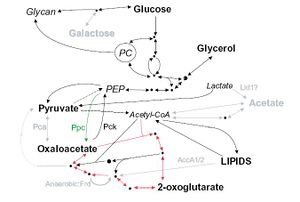Host Dependency of Mycobacterium leprae
Introduction
Mycobacterium leprae, the bacterial cause of leprosy, is almost impossible to culture in a laboratory. M. leprae can only grow when acting as a parasite in animals with lower body temperature, such as armadillos, genetically immune deficient mice, or the extremities of a human body (Slonczewski). M. leprae has one of the slowest doubling times of any pathogen; it takes approximately 14 days for the cells to divide (Slonczewski). COMMENT ABOUT HOW CLOSE IT IS TO M TUBERCULOSIS
The genome for M. leprae has been sequenced, and it has been found that almost half of the genes are pseudogenes; genes that no longer code for proteins to be transcribed in the cell. Many of these pseudogenes correspond to genes found in Mycobacterium tuberculosis that are functional (Slonczewski). M. leprae seems to be evolving to lose
Mycobacterium leprae genome
Include some current research in each topic, with at least one figure showing data.
Section 2

Include some current research in each topic, with at least one figure showing data.
Section 3
Include some current research in each topic, with at least one figure showing data.
Conclusion
Overall paper length should be 3,000 words, with at least 3 figures.
References
Edited by student of Joan Slonczewski for BIOL 238 Microbiology, 2009, Kenyon College.
